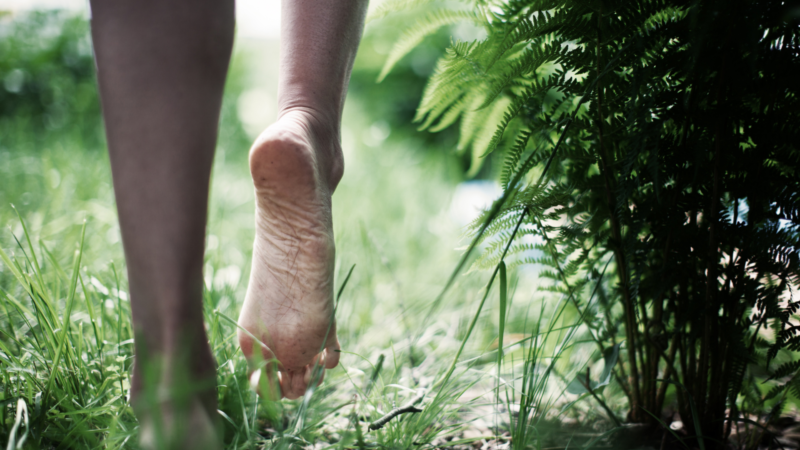Environmental medicine, which usually addresses environmental factors with a negative impact on human health, has uncovered a surprisingly positive and often overlooked environmental factor on health: direct physical contact with the abundant electrons on the surface of the earth. This is called grounding, or earthing, a therapeutic technique that involves doing activities that “ground” or electrically reconnect you to the earth.
While grounding still remains largely under-researched, the few scientific studies done on the topic found several benefits on human health, including inflammation, cardiovascular disease, muscle damage, chronic pain, and mood. According to these studies, grounding affects the living matrix, which is the central connector between living cells. Researchers believe that grounding can help the body to restore its natural defenses.

Benefits of Grounding
While more research on the benefits of grounding has to be conducted, studies on people who practice grounding have uncovered health improvements for conditions such as chronic fatigue, chronic pain, anxiety and depression, sleep disorders, and cardiovascular disease.
While many of these studies were small and require further research, their initial findings seem promising. Although some health professionals believe that the benefits of grounding therapy simply stem from feeling like you’re reconnected to nature, the method is free and harmless. Thus, it doesn’t hurt to practice grounding.
How to Practice Grounding
While there are several ways of grounding, they all focus on reconnecting you to the earth, either through direct or indirect contact with the earth. Some examples of grounding include:
- Walking barefoot – Granted, it has to be warm enough outside, walking barefoot is the easiest way to ground yourself to the earth. Whether you are walking on grass, sand, or mud, as long as the surface you are walking on is part of the natural earth, you benefit from grounding energy.
- Lying on the ground – Similar to walking barefoot, lying on the ground exposes your skin to the natural earth. In fact, lying down can increase your skin-to-earth contact. You can lie down on the grass in your garden or in a park, or in the sand at the beach.
- Submerging in water – According to researchers, water may also be used for grounding. All you have to do is swim in the ocean or wade in a clear lake.
Using a Grounding Mat
Unfortunately, it’s not always summer and you may not have access to the beach or a park. As an alternative, you can ground yourself with the use of a grounding mat, which replaces direct contact with the earth. The earthing hypothesis is that the earth’s surface has a negative electric charge, and when it comes in contact with human tissue, it creates an equalization. The body can take on extra electrons and build up a static electric charge. A grounding mat mimics the electric current of the earth which allows a person to practice grounding at home or in an office.
Conclusion
Grounding is an easy, cost-free therapeutic method with potential benefits for many health conditions such as pain, fatigue, sleep disorders, anxiety, depression, and cardiovascular disease. It may involve walking barefoot, lying on the ground outdoors, or swimming in the ocean. Because it is painless, widely accessible, and harmless, it’s a great addition to an already healthy lifestyle.
Sources:
https://www.ncbi.nlm.nih.gov/pmc/articles/PMC3265077
https://www.healthline.com/health/under-review-grounding-mats